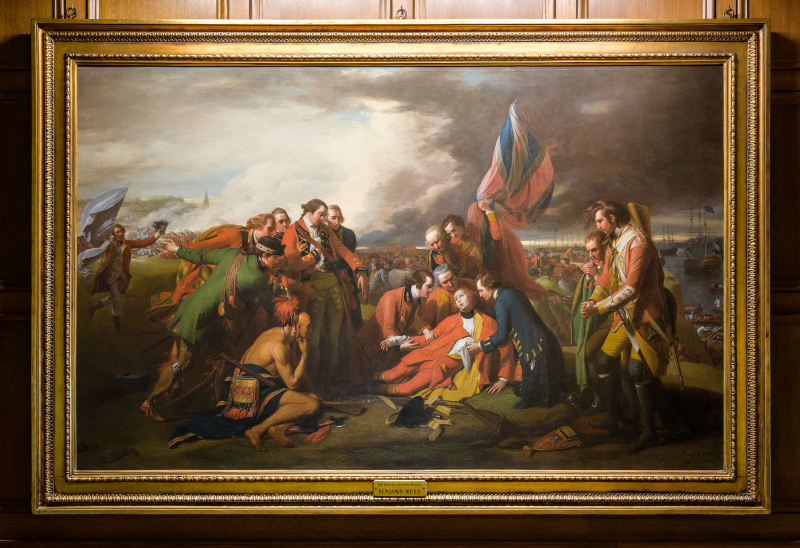The Death of General Wolfe
The Battle of Quebec, sometimes referred to as the Battle of the Plains of Abraham, took place on September 13, 1759, as shown in The Death of General Wolfe. The destiny of France's possessions in North America was decided by this crucial moment in the Seven Years' War. General Wolfe became a national hero after his passing. In the British Empire, he came to symbolize Great Britain's victory in the Seven Years' War. At its debut exhibition in London, there were lines out the door to see this picture.
An interesting fact about James Wolfe is that his valiant death propelled him into the ranks of British military history legends. The picture "The Death of General Wolfe" by the Anglo-American artist Benjamin West is the most well-known tribute to him, despite the fact that there have been numerous monuments and statues built to remember him.
Benjamin West, an Anglo-American painter, created The Death of General Wolfe in 1770 to honor General James Wolfe, who died at the conclusion of the Battle of Quebec in 1759. A traditional guideline of historical portraiture was broken by the painting, which vividly suggested martyrdom and featured people wearing contemporary clothing who had not been there at the occasion. One of the most well-known representations of 18th-century art is painting. Wolfe is portrayed in the artwork as a figure resembling Christ, dying in the arms of multiple people, and the scene depicts his death at the Battle of Quebec. One of the most well-known works of British art is presently on display at the Natural Gallery of Canada.








